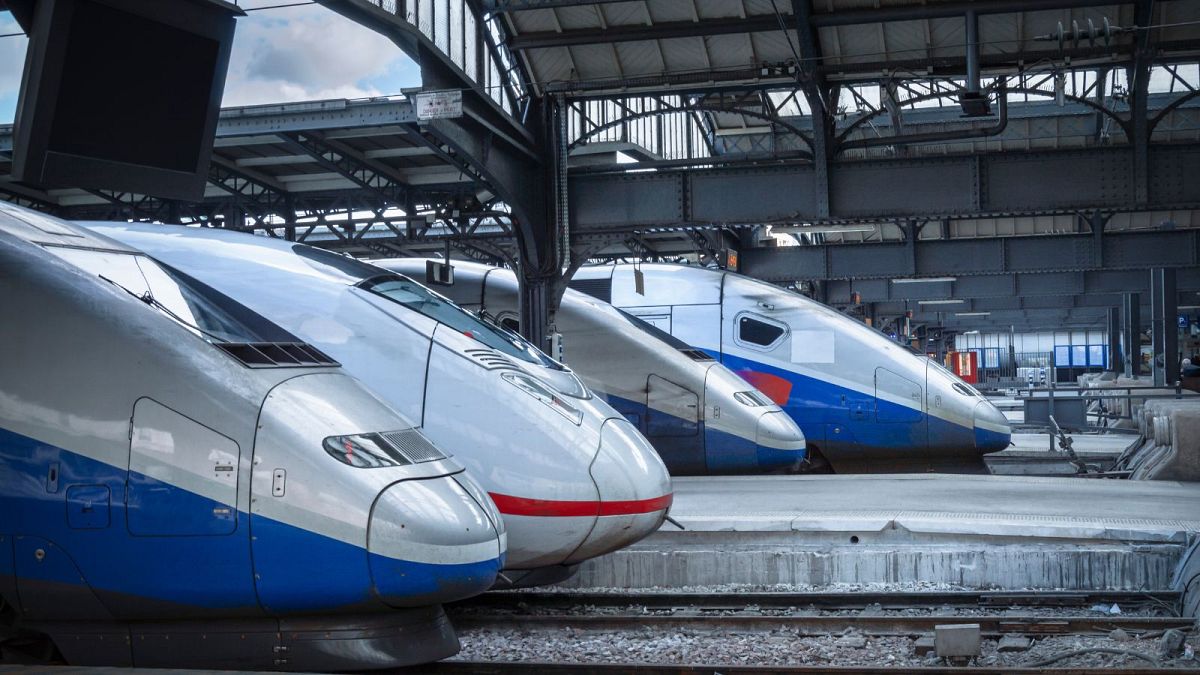Greenpeace is calling for more investment in European railways to create more direct train routes and encourage people to fly less.
There are six times as many direct flight connections between European cities than direct train connections, a new analysis by Greenpeace has found.
In several major European cities there are no direct trains to any of the other cities included in the study at all.
There are many more direct flight routes than train routes in Europe
Campaigners analysed 990 routes between 45 major European cities and found that 114 routes (12 per cent) are served by direct train connections. There are another 305 routes (31 per cent) where a direct connection would be possible using existing tracks, but the route is not currently used.
On the other hand, 69 per cent of the 990 routes are served by direct flights. Greenpeace claims this encourages people to fly rather than take the train.
“For years, Europe has rolled out the red carpet for climate-damaging air travel, showering it with tax breaks, while trains and rail infrastructure have withered away,” says Herwig Schuster, a transport campaigner for Greenpeace Central and Eastern Europe.
Where in Europe is it easiest to take a direct train?
Greenpeace says that none of the cities analysed are fully exploiting their potential for direct train connections.
Vienna came out on top as the city with the most direct train connections with 17. Munich was second-best with 15 connections and Berlin, Zurich and Paris rounded off the top five with 13 connections apiece.
At the other end of the scale there are six cities that have no direct train connections to any of the other cities analysed: Athens, Lisbon, Pristina, Sarajevo, Skopje and Tallinn.
How can Europe’s railways be improved?
In an interview with Euronews last month, Dr Alberto Mazzola, the executive director of the Community of European Railway and Infrastructure Companies (CER), an advocacy group representing European train companies, emphasised the importance of trip duration for passengers.
“If there’s a journey of 18 hours, very few will take the train even if we can sell the ticket,” he says.
“To address this we’d like to connect all European capitals and major cities by high-speed train,” he adds.
Mazzola is pushing the EU to provide more funding for infrastructure to create these links.
A report by the European Commission found that the total number of long-distance passenger cross-border services in the EU remained the same from 2001 to 2019, and overall they make up only about seven per cent of train journeys in Europe.
Meanwhile the total number of passenger night trains in Europe fell from 1,257 per week in 2001 to 445 in 2019, although there have been some lines reintroduced since 2019, such as Brussels-Prague.
To boost these numbers and encourage more people to take trains, Greenpeace is calling on national governments and the EU to support the development of direct train services through investment in infrastructure, better cooperation between railway companies, and mandating direct trains where they are not yet commercially viable.
“It’s time for European governments and the EU to correct this historic imbalance,” says Schuster.
“Europeans deserve access to clean, efficient, comfortable and affordable public transport that is good for them and good for the planet.”

